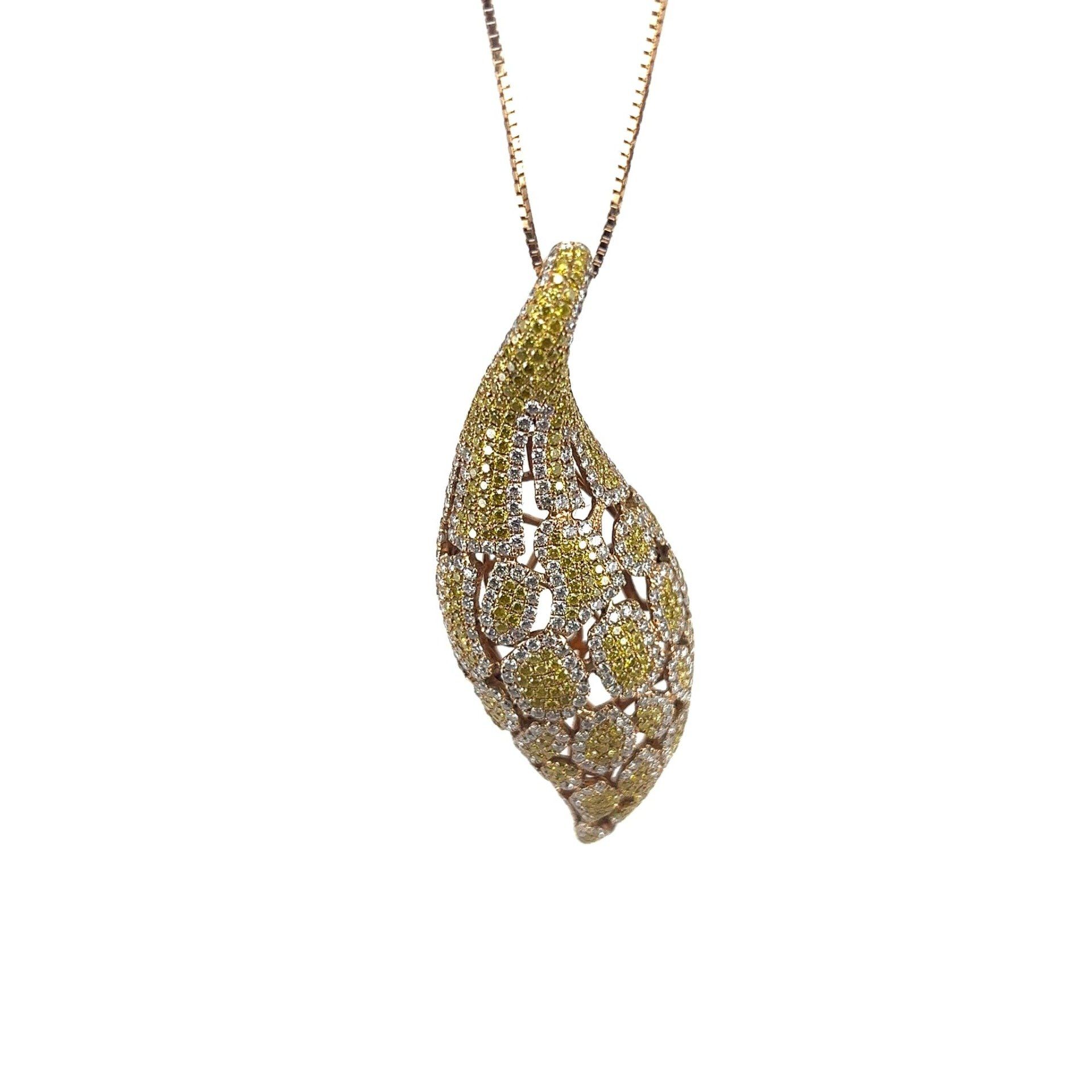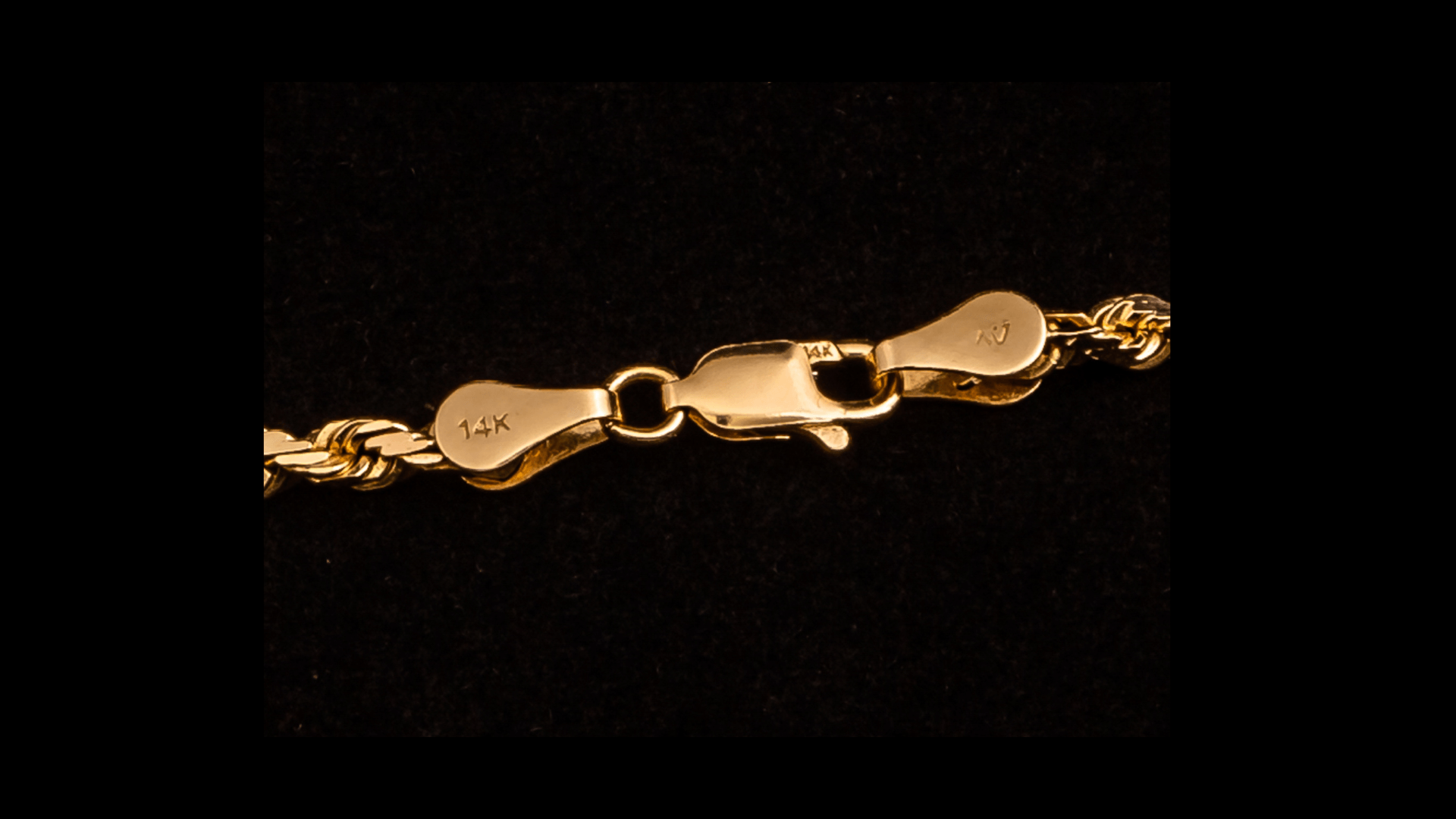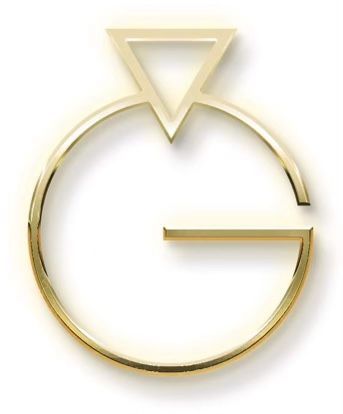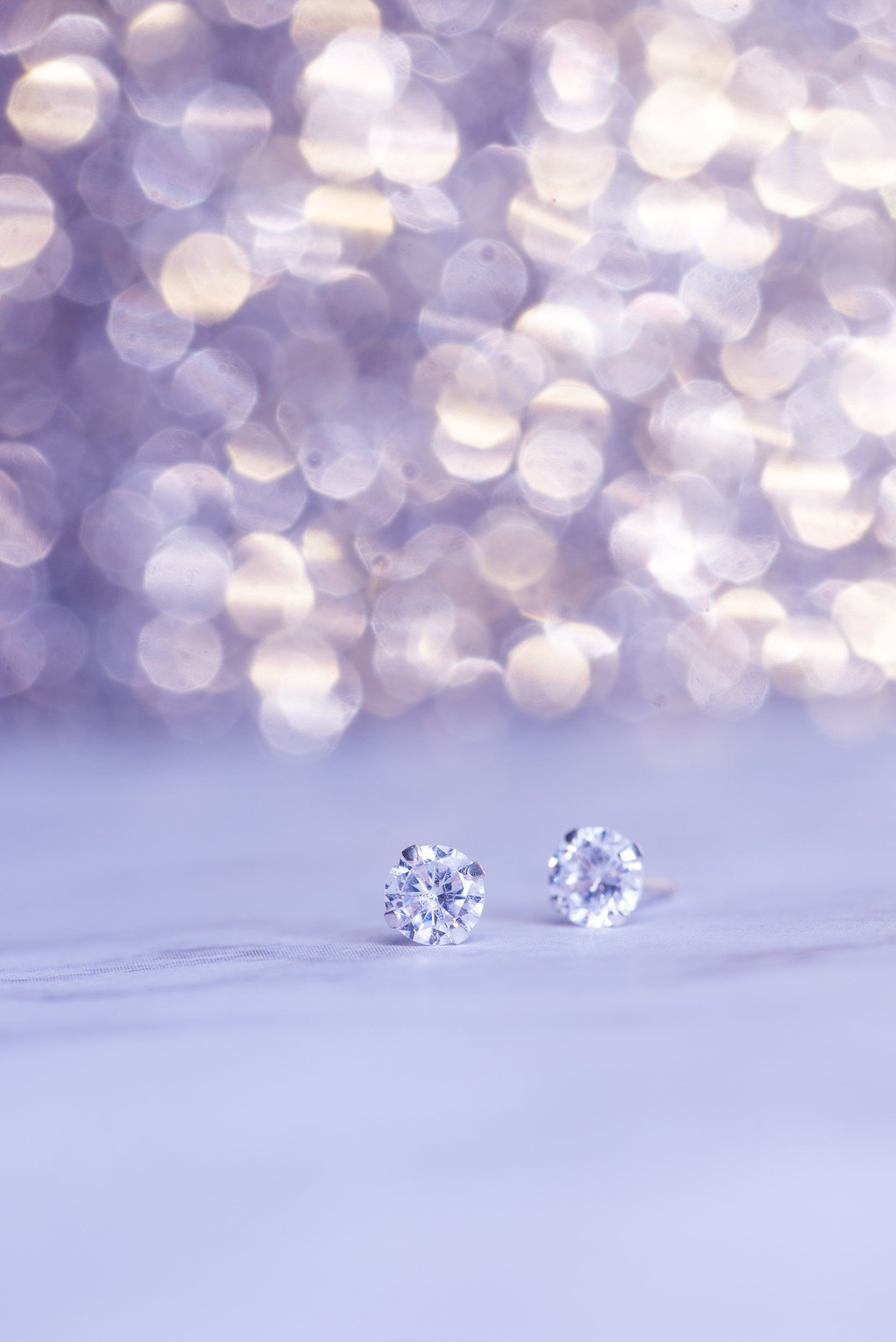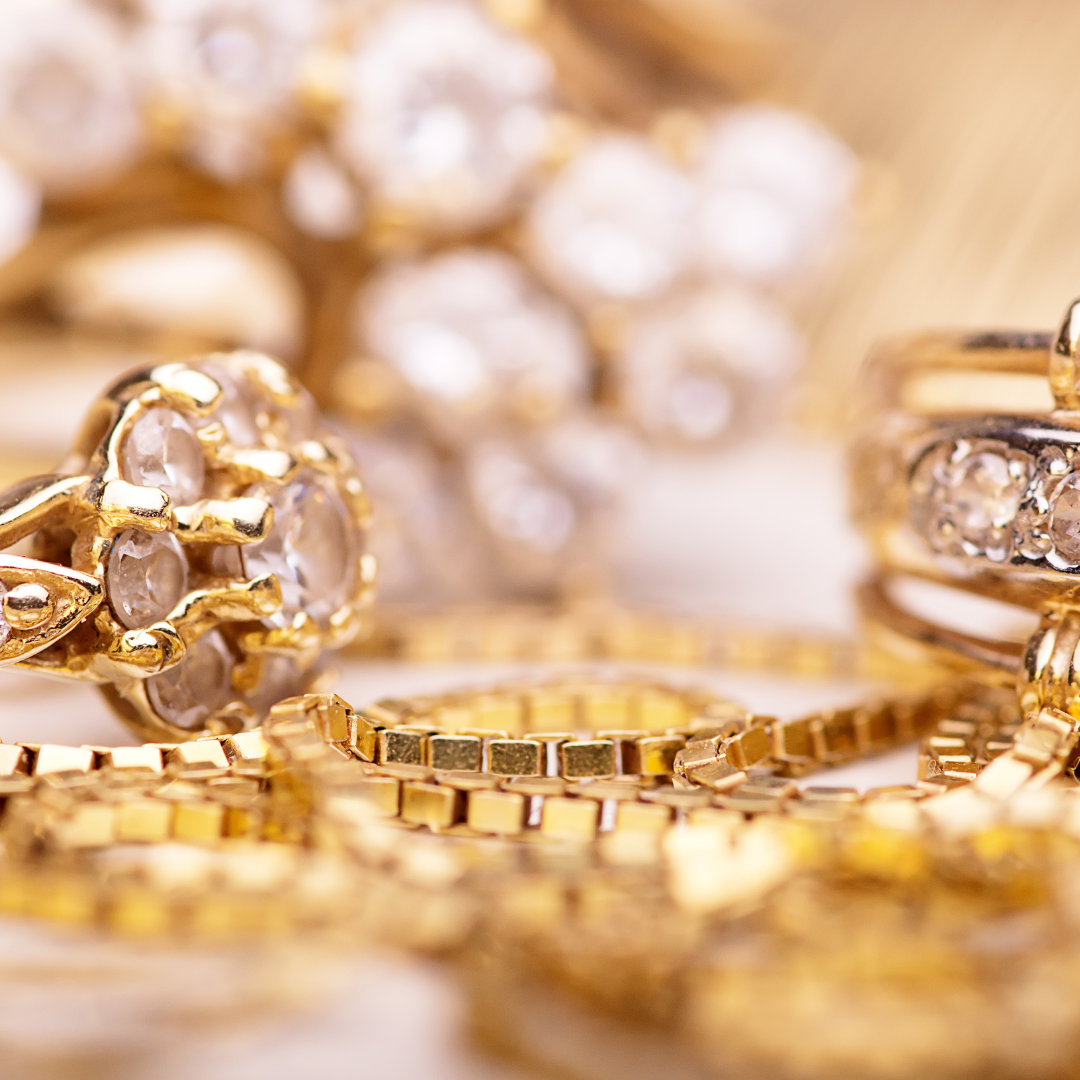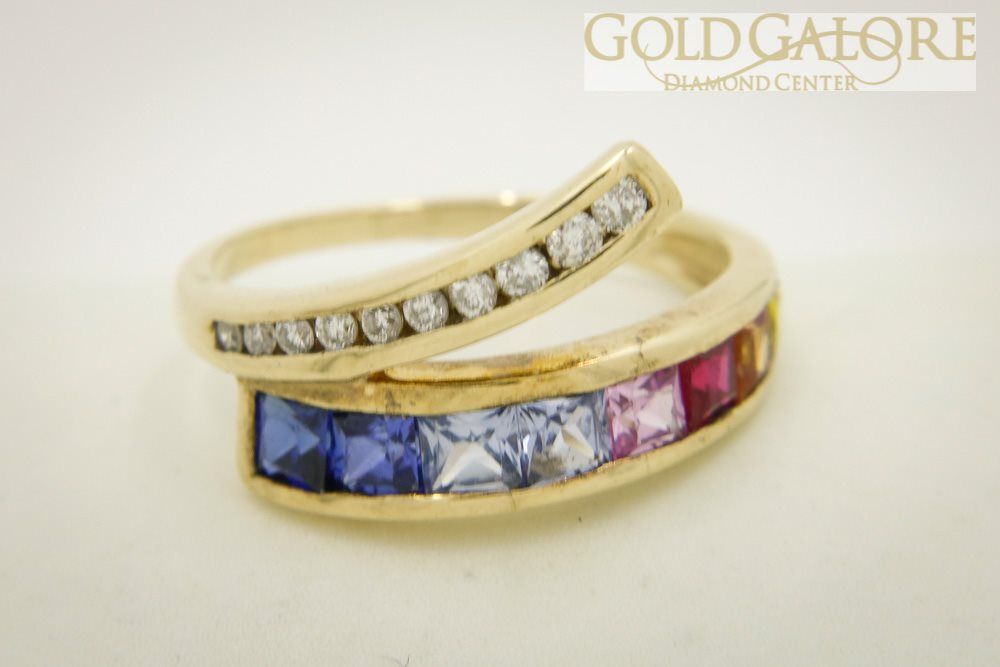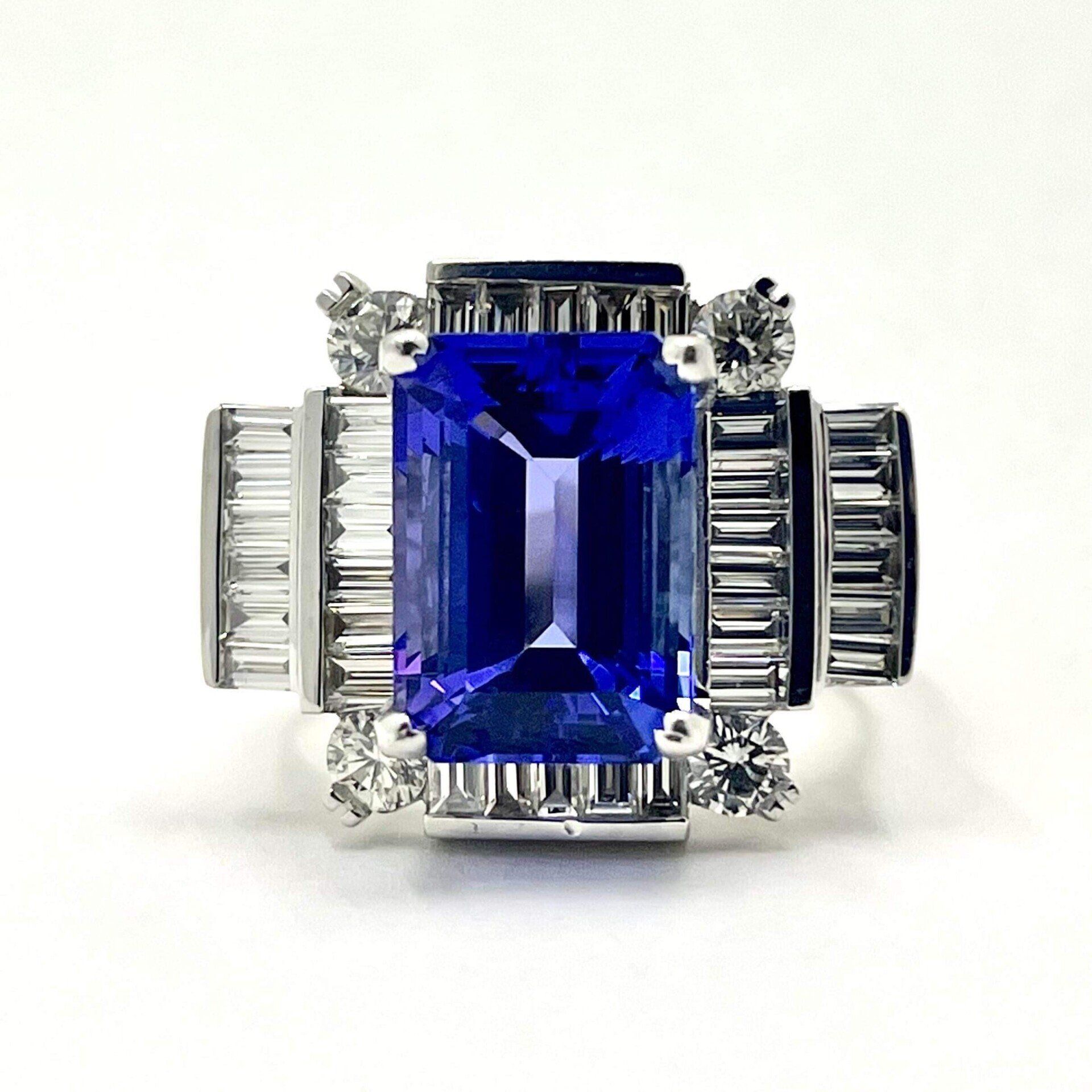Jewelry Stamps 101: Identifying Diamond Symbols Stamped on Jewelry
When purchasing jewelry, you may notice different letters and numbers stamped into the metal.
The goal of these marks is to ensure quality and authenticity. Some jewelry markings will help you identify things like metal content or country of origin, while others proudly boast a brand name, a trademark, and other hallmarks.
Knowing what you are looking at when examining modern or antique jewelry can help you determine its value and history.
If you’re a buyer, understanding markings will help keep you from falling prey to a scam or poorly made knockoff. As a seller, the more you know about different markings, the better equipped you’ll be to price your items and sell them quickly.
Where can you find jewelry marks?
Most jewelry marks are found on the inside surfaces of a piece. Look for them at the back of a pendant, inside a ring, and on the clasp of a necklace or bracelet.
Some markings can also be found on the charm of a bracelet or dangle from an earring or necklace.
Know Your Jewelry Stamps & Markings
Now that you know where to look, let’s dive into some of the most common jewelry markings and what they mean.
Stamps for Precious Metals
To the untrained eye, most gold, silver, and platinum jewelries look the same. But in reality, there are differences between precious metals and alloys.
For example, a gold ring will not contain only gold, as this metal is too soft to work with. It will be an alloy in which the main ingredient is gold, but it also contains other metals to make it stronger. The more gold and the fewer alloys your piece contains, the higher its value will be.
This is also true for other precious metals such as silver, which is often alloyed with copper and other metals to make it stronger. The higher the silver content and less alloyed metal, the more expensive your piece will be.
This information is stamped on jewelry using a purity mark.
For gold purity
Karat or carat is the standard used to measure the purity of gold jewelry. Pure gold is 24 karat, so a piece stamped with 12 karat means it is 50% gold.
Common karat weight stamped on items include 10k, 12k, 14k, 18k, 20k, and 22k. These can be white or yellow gold.
Karat value also has a decimal equivalence:
- 10k gold : .417
- 14kt gold : .585
- 18kt gold: .750
- 20kt gold: .833
- 24kt gold : .999
Aside from karat, you may also see gold stamped with the letters G.F., G.P., or G.E.
They stand for Gold Filled (G.F.), Gold Plated (G.P.), and Gold Electroplate, respectively.
- Gold Plated: This type of gold jewelry is often composed of base metal with a very thin coat of pure gold, aka gold plating.
- Gold Filled: Similar to gold plated items, these contain a base metal with a gold layer. However, the solid layer of gold is fused with heat onto the base metal to create a durable bond.
- Gold Electroplate: This type of gold jewelry is usually composed of solid brass or copper. A layer of gold is then fused onto the brass or copper to create a hard surface that will resist wear and tear.
For a more in-depth discussion of these types of jewelry, read Gold Vermeil vs. Gold Plated vs. Gold Filled.
As you can see, there’s a massive difference between solid gold jewelry and plated or filled pieces – and you will see it in the price, too.
Since there’s very little gold content in plated or filled items, they’re not nearly as expensive as those with solid gold.
For silver purity
Silver is another precious metal that’s often alloyed with other metals to increase its strength. If you’re a fan of silver or own silver jewelry, you’ve probably heard the term “sterling silver” already.
Here’s what it means:
- Sterling Silver (aka S. Silver, 925, or .925 Silver): This type of silver contains 92.5% pure silver, with the remaining 7.5% being other metals that help to enhance its hardness and durability.
- Vermeil: This type of silver jewelry contains a gold layer over sterling silver as the base metal.
- Silver electroplate or silver plated jewelry: This type of silver contains a solid metal core with a silver surface plating, just like gold electroplate jewelry.
- German Silver or Nickel Silver: This looks and shines like silver, but does not contain any silver. Instead, it’s composed of copper, nickel, and zinc.
For other metals
Aside from gold and silver, there are other common metals used for jewelry making. These include platinum, palladium, and titanium.
- Platinum or Plat: This mark indicates at least 95% platinum content in the piece.
- Palladium or Pall: This mark indicates at least 95% palladium content in the piece.
- Titanium : This stamp means that the piece is titanium or has titanium content.
- Tungsten : This stamp means that the piece is tungsten or has tungsten content.
- S.S, S.Steel, or Stee l: These stamps indicate that the piece is stainless steel or contains stainless steel content.
Diamond Symbols Stamped on Jewelry
You’ll also find jewelry marks stamped onto diamond jewelry, such as rings, necklaces, bracelets, and earrings.
- SOL: This mark means Solitaire Diamond, and is usually followed by a mark for the gem’s karat weight.
- CZ: This mark means your “diamond” jewelry actually has Cubic Zirconia, which is a synthetic gemstone and not a diamond.
- Cw: This means carat weight. Carat weight measures how heavy a diamond is or its total diamond weight, not its size.
For more details on more common diamond terms like special cut, diamond carat, etc. read this: How Much is a 9-Carat Diamond Worth ?
Maker’s Marks
Want to know who made your ring, bracelet, or necklace?
Look for the maker’s mark. Many manufacturers and companies stamp this mark on their pieces of jewelry to identify the maker and the origin.
For example, Tiffany & Co. has a “T & CO” mark to identify their pieces.
Designers also typically place their initials on their pieces as a mark of ownership. This is a useful thing to know, because the name of a high-end designer name can boost the price of the piece. For example, © D.Y stands for David Yurman, one of the most famous jewelry designers in the US.
You’ll usually find this hallmark somewhere near the metal content stamp. Since there are so many jewelry companies in the world, there are also countless variations of these markings.
If you have a silver piece, look it up on The Online Encyclopedia of Silver Marks, Hallmarks, and Maker’s Marks. This site has the most extensive resource on identifying markings for silver jewelry.
Patents
Some jewelry pieces have patents, particularly those with special structural qualities. For example, Italian charm bracelets contain a patent number on them. This serves as a sign that the piece was patented and registered with the United States government.
Patent numbers are generally located in inconspicuous places on the piece, so you won’t see them while wearing it. Since this number is exclusive to the owner, you can look up the patent number on the US Patent and Trademark Office website.
Personalized Markings
Other marks are not the result of branding by a company, but an engraving requested by the person who bought it. It’s more sentimental in nature than a brand or other identification.
For instance, monograms are a common stamp with two or three initials that are usually engraved on necklaces, bracelets, rings, pendants—any piece of jewelry. Monograms mean different things for different people.
Some wear them as a sign of individuality, some wear it to remember someone close to them, and others wear it as a sign of marriage.
Aside from monograms, wedding rings and engagement rings may also have a date letter or a special phrase engraved on them.
Many people customize their jewelry item in the same way, for many reasons. A hallmark is not just about style—it’s about celebrating special moments in their lives.
The hallmark on my jewelry is blurry. Is it fake?
Not necessarily. Sometimes, jewelry hallmarks will be blurry, uneven, or nearly impossible to read. There are a few reasons why this may happen:
- The marker hit the mark at a wrong angle.
- The stamper skid against the metal when it was hit
- The marker didn’t make full contact with the metal when it was imprinted
- The jewelry is scuffed, scratched, or dirty
- The jewelry is older, and the stamp has worn off over time
Any of these reasons can cause the marks to appear unclear. To double-check, try using a magnifying glass.
As far as authenticity is concerned, if you can’t see the stamps clearly for whatever reason, it’s best to consult with an expert on the matter.
My gold or silver jewelry has no stamp for metal content. Is that illegal?
No, it’s not illegal. In fact, some jewelry manufacturers don’t stamp their pieces with metal content. It’s just one of the options required by the Jewelers Vigilance Committee for identification:
- The jewelry manufacturer or company needs to inform consumers of precious metal content, but not necessarily by stamping the piece. They can indicate it on a packaging component like a hang tag, the appraisal that comes with the jewelry, or even on the receipt or purchase invoice.
- The jewelry manufacturer or company can stamp the metal content on the piece, but if they do, they’re also required to place their trademark, company name, or retailer’s trademark near the metal content stamp. This ensures accountability on the part of the manufacturer.
- As for non-precious metals like stainless steel and tungsten, there is no legal requirement for stamping.
Again, consider taking your jewelry to a professional for verification in this case.
Can you fake stamps on jewelry?
Anything’s possible. The real question is, will that fake stamp pass the scrutiny of a professional?
We all know how difficult it is to forge a signature of someone that we don’t know. A similar principle applies to stamping on jewelry: even if you do manage to fake it, it’s not going to be easy or foolproof.
In fact, it’s pretty unlikely that a professional will be duped.
However, this also applies to the customer side of things. If you’re not confident of your ability to read a stamp or your eyesight, if you don’t know what a stamp is supposed to look like for a particular metal, or if you just want to be extra careful—and it’s not an expensive piece of jewelry—it’s best to have it looked at by a professional.
In the end, be aware that there are no hard and fast rules for stamping. It’s what works best for each company that determines how they put their marks on their wares.
The important thing to remember is that stamped jewelry has a history, and by understanding the markings, you can learn about where it came from and its value.
FAQs
What does a diamond symbol mean on jewelry?
On jewelry, this symbol indicates that the piece has a diamond or stones on it. Sometimes, diamonds are used as accents to larger pieces of jewelry. The karat stamp doesn’t indicate the center stone—it just means that there are diamonds somewhere on the piece.
What is the stamp for diamonds on a ring?
It depends on whether or not the diamond is natural or lab-created. If it’s a real diamond, you can expect to see a stamp with carats and points. If it’s made of synthetic gemstones like Cubic Zirconia, you may see a CZ mark. If the stones aren’t marked entirely clear, it’s probably not a natural stone.
Do diamonds have a stamp?
Authentic diamonds generally do. It may not be legible to you, but it should be there. Some diamonds can also have laser inscriptions on them that indicate when and where the diamond was mined. Other kinds of markings include size grading information like points or fractions of a carat.
How do I identify the marks on my jewelry?
Depending on the type of jewelry and metals used, you may be able to identify markings by yourself. Careful evaluation and research is required, though, because it’s possible that the stamp has been tampered with or removed.
If you’re unsure about any kind of marking—whether it be precious metal content or whether a stone is real or synthetic— or if you suspect you’re holding costume jewelry, consider consulting with an expert.
How can I tell if my gold is real?
Aside from taking it to a professional, you can use a lighter to tell if gold is real plus other DIY tests.
Is gold filled real gold?
It’s not solid gold, specifically. Gold filled items only have a layer of gold mechanically fused into the main metal. As such, it has very little gold content.
What does a .925, 925, sterling silver, or ster stamp mean?
These are all stamp markings for sterling silver, which contains 92.5 percent pure silver and 7.5 percent other metals like copper or another metal. .925 means that the piece is sterling silver, 925 means it’s 92.5% pure, and ster means “sterling.”
What does “P” mean on my gold ring?
“P” means Plumb gold. For example, let’s say your gold ring is marked as 14k or 14 karats. A “P” means the ring is at least 14 karat and can be more than that.
Use this knowledge when buying gold jewelry— when you see it, it’s possible for the item you’re looking at to have more gold content than at first glance.
Learn More About Your Jewelry with Gold Galore Jewelers
Gold Galore Jewelers can help you learn more about your gold, silver, diamonds, and other fine jewelry through a professional appraisal.
We can also repair your jewelry or help you create custom jewelry designs for one-of-a-kind pieces. Contact us today !
The post Jewelry Stamps 101: Identifying Diamond Symbols Stamped on Jewelry appeared first on Gold Galore Jewelers | Expert Jewelers.
